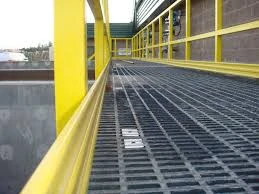
-
 Afrikaans
Afrikaans -
 Albanian
Albanian -
 Amharic
Amharic -
 Arabic
Arabic -
 Armenian
Armenian -
 Azerbaijani
Azerbaijani -
 Basque
Basque -
 Belarusian
Belarusian -
 Bengali
Bengali -
 Bosnian
Bosnian -
 Bulgarian
Bulgarian -
 Catalan
Catalan -
 Cebuano
Cebuano -
 China
China -
 China (Taiwan)
China (Taiwan) -
 Corsican
Corsican -
 Croatian
Croatian -
 Czech
Czech -
 Danish
Danish -
 Dutch
Dutch -
 English
English -
 Esperanto
Esperanto -
 Estonian
Estonian -
 Finnish
Finnish -
 French
French -
 Frisian
Frisian -
 Galician
Galician -
 Georgian
Georgian -
 German
German -
 Greek
Greek -
 Gujarati
Gujarati -
 Haitian Creole
Haitian Creole -
 hausa
hausa -
 hawaiian
hawaiian -
 Hebrew
Hebrew -
 Hindi
Hindi -
 Miao
Miao -
 Hungarian
Hungarian -
 Icelandic
Icelandic -
 igbo
igbo -
 Indonesian
Indonesian -
 irish
irish -
 Italian
Italian -
 Japanese
Japanese -
 Javanese
Javanese -
 Kannada
Kannada -
 kazakh
kazakh -
 Khmer
Khmer -
 Rwandese
Rwandese -
 Korean
Korean -
 Kurdish
Kurdish -
 Kyrgyz
Kyrgyz -
 Lao
Lao -
 Latin
Latin -
 Latvian
Latvian -
 Lithuanian
Lithuanian -
 Luxembourgish
Luxembourgish -
 Macedonian
Macedonian -
 Malgashi
Malgashi -
 Malay
Malay -
 Malayalam
Malayalam -
 Maltese
Maltese -
 Maori
Maori -
 Marathi
Marathi -
 Mongolian
Mongolian -
 Myanmar
Myanmar -
 Nepali
Nepali -
 Norwegian
Norwegian -
 Norwegian
Norwegian -
 Occitan
Occitan -
 Pashto
Pashto -
 Persian
Persian -
 Polish
Polish -
 Portuguese
Portuguese -
 Punjabi
Punjabi -
 Romanian
Romanian -
 Russian
Russian -
 Samoan
Samoan -
 Scottish Gaelic
Scottish Gaelic -
 Serbian
Serbian -
 Sesotho
Sesotho -
 Shona
Shona -
 Sindhi
Sindhi -
 Sinhala
Sinhala -
 Slovak
Slovak -
 Slovenian
Slovenian -
 Somali
Somali -
 Spanish
Spanish -
 Sundanese
Sundanese -
 Swahili
Swahili -
 Swedish
Swedish -
 Tagalog
Tagalog -
 Tajik
Tajik -
 Tamil
Tamil -
 Tatar
Tatar -
 Telugu
Telugu -
 Thai
Thai -
 Turkish
Turkish -
 Turkmen
Turkmen -
 Ukrainian
Ukrainian -
 Urdu
Urdu -
 Uighur
Uighur -
 Uzbek
Uzbek -
 Vietnamese
Vietnamese -
 Welsh
Welsh -
 Bantu
Bantu -
 Yiddish
Yiddish -
 Yoruba
Yoruba -
 Zulu
Zulu
GRP Insulation Solutions for Enhanced Tank Performance and Energy Efficiency
The Importance of GRP Insulation Tanks in Modern Industries
In recent years, the significance of glass-reinforced plastic (GRP) insulation tanks has grown substantially in various industries, most notably in the fields of water treatment, chemical storage, and energy sectors. These tanks represent a cutting-edge solution for the storage and insulation of different fluids, offering a combination of durability, corrosion resistance, and efficiency that traditional materials cannot match.
Understanding GRP Technology
Glass-reinforced plastic, commonly known as fiberglass, is a composite material made of a polymer matrix reinforced with glass fibers. This structure provides exceptional strength-to-weight ratio, making GRP tanks both lightweight and robust. The manufacturing process employs advanced techniques, which enable the creation of tanks that can withstand harsh environmental conditions, high pressures, and varying temperatures.
One of the standout features of GRP tanks is their insulating properties. When constructed with insulation technology, these tanks are designed to minimize heat transfer, which is crucial for maintaining the desired temperature of the stored liquids. This is particularly beneficial in industries where temperature control is vital, such as in the storage of chemicals, oils, or potable water.
Advantages of GRP Insulation Tanks
1. Corrosion Resistance Unlike metal tanks that may corrode over time, GRP tanks are inherently resistant to a wide range of chemicals and environmental conditions. This characteristic ensures the longevity of the tanks, reducing the need for frequent replacements and maintenance costs.
2. Thermal Efficiency GRP insulation tanks excel in thermal insulation, helping to keep contents at stable temperatures. This feature is particularly important for energy conservation, especially in industries where temperature fluctuations can lead to inefficiencies or spoilage.
3. Lightweight and Easy to Handle The lightweight nature of GRP makes transportation and installation easier compared to traditional tanks. This not only streamlines logistics but also allows for simpler handling during installation and any future relocations.
grp insulation tank

4. Versatility GRP tanks can be manufactured in various sizes and shapes, accommodating diverse storage needs across different sectors. Their adaptability makes them suitable for applications ranging from small-scale facilities to large industrial plants.
5. Environmental Impact As businesses increasingly focus on sustainability, GRP tanks provide an environmentally friendly option. They are often manufactured using recycled materials and can be recycled at the end of their life cycle, contributing to a circular economy.
Applications of GRP Insulation Tanks
The applications of GRP insulation tanks are multi-faceted. In the chemical industry, they are commonly used to store acids, alkalis, and other corrosive substances safely and efficiently. Water treatment plants utilize these tanks to hold treated or raw water, ensuring that temperature stability is maintained during storage.
In the energy sector, particularly within renewable energy, GRP tanks are employed for storing biodiesel and other biofuels. Their insulating properties help maintain the fuel’s integrity, preventing losses due to evaporation or degradation.
Moreover, GRP tanks are increasingly being adopted in residential and commercial applications, particularly for storing hot water or other liquids that require insulation.
Conclusion
As industries continue to evolve and face new challenges, the demand for effective and reliable storage solutions becomes paramount. GRP insulation tanks stand out as a forward-thinking option that meets these needs by providing strength, durability, and thermal efficiency. Adopting this technology not only enhances operational efficiency but also aligns with sustainable practices, showcasing a commitment to both innovation and environmental stewardship. In summary, GRP insulation tanks represent a significant advancement in storage solutions that address the functional, economic, and ecological needs of modern enterprises.









